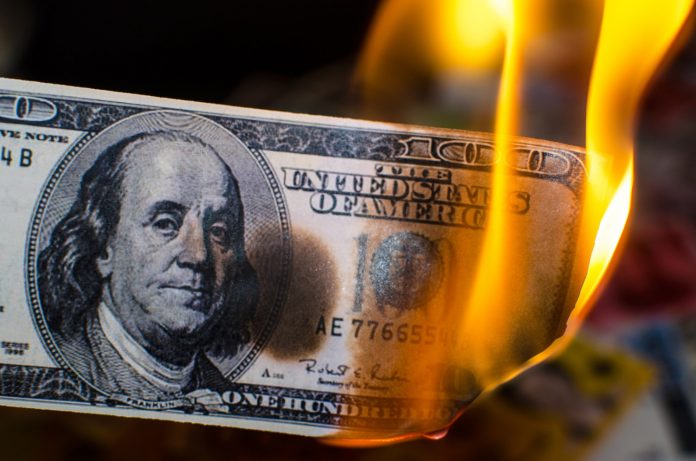Stocks bounced all over the place this morning as market participants parsed through a critical inflation update. This update is pivotal for figuring out when the Federal Reserve might begin to reduce interest rates and if the stock market’s recent upswing will sustain its momentum.
The Dow Jones Industrial Average dipped slightly by 0.2%. In contrast, the S&P 500 edged up. Meanwhile, the tech-heavy Nasdaq Composite climbed by 0.4%.
A key inflation gauge closely watched by The Fed, the Core PCE Deflator, was to blame for today’s erratic price action as it eased to +2.8% year-over-year in January. This is a level not seen since March 2021 and met market expectations.
The overall PCE Deflator saw a month-over-month increase of 0.3%, landing at +2.4% year-over-year in January as anticipated.
Unfortunately, on a month-over-month basis, services experienced a significant uptick. Yet, a closer look reveals some worrying trends.
The annualized rate of Core PCE over the last three months accelerated to 2.8% from 2.0%. Over six months, it increased slightly to 2.6% from 2.2%. Service costs, when examined more closely, surged, and Durable Goods shifted from a period of deflation.
In a concerning development, inflation in Services excluding Shelter – aka, the “SuperCore” PCE, which the Fed prefers above all other segments of the PCE – saw a year-over-year increase to 3.45%. This rise was propelled by a notable 0.6% month-over-month leap, marking the most significant monthly increase since December 2021.
Delving deeper, every component of the SuperCore inflation metric experienced a month-over-month rise.
Both income and spending went up, with income notably jumping by 1.0% month-over-month, surpassing expectations of a 0.4% rise. Spending, however, only notched a 0.2% increase, aligning with forecasts.
Importantly, spending is now growing at a slower year-on-year rate than income, hitting the lowest growth rate since February 2021.
On the income front, government wage growth decreased from a record 8.8% in December to 7.8% in January. Likewise, private wages saw a reduction to 5.4% in January from 5.6% in December.
However, the savings rate in January only marginally increased to 3.8% from 3.7%…
Here’s the reason: Government payouts surged by $92BN month-over-month in January, marking the most significant increase since July 2021. This spike was mainly due to the COLA adjustment, raising questions about future consumer spending capabilities.
Despite market optimism over the headline disinflation news, it’s clear that the situation is not entirely positive. A large portion of the inflation decrease has been cyclical. Non-cyclical Core PCE inflation, on the other hand, remains stubbornly high, even though it has retreated from peak levels.
With the backdrop of robust growth (GDP) and persistent high non-cyclical inflation, one wonders if The Fed, which supposedly operates without political bias, will actually proceed to cut rates four times this year.
The anticipation of the PCE index data release cast a shadow over stocks throughout the week. Policymakers have consistently emphasized their need to see further evidence of diminishing price pressures before considering rate reductions. Despite the market’s early, bullish reaction, this data did not give Fed doves what they were hoping for.








